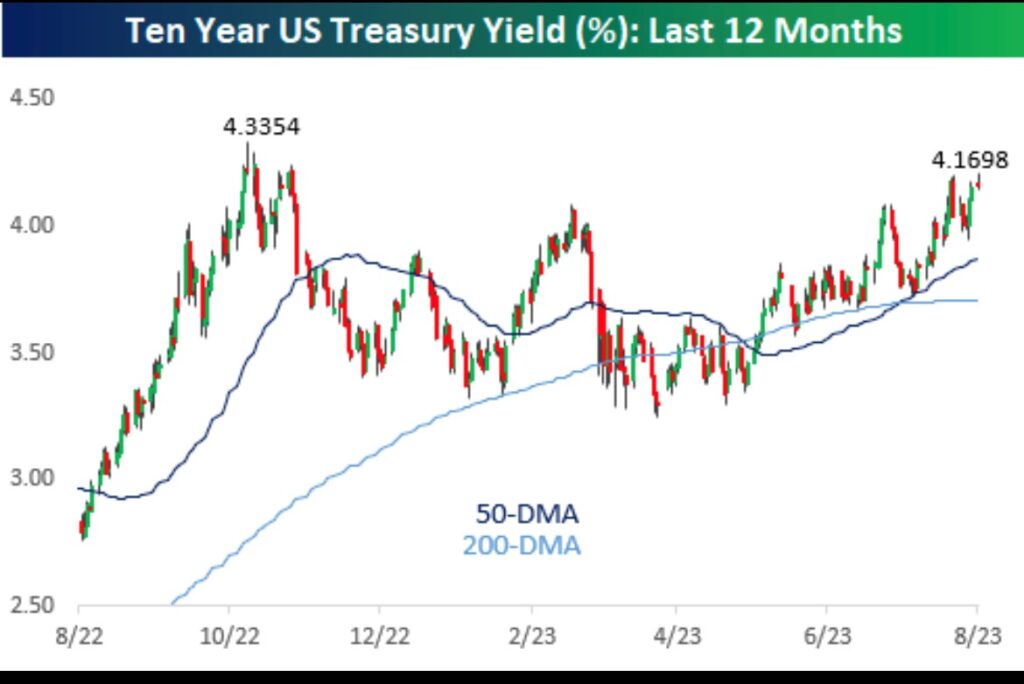Interest Rates – What’s Going On?
August 17, 2023
I’ve written quite a bit about interest rates in recent years. They have an inextricable impact on financial asset prices, so it’s always instructive to pay attention to what is happening to rates – both in the US and abroad.
Interest rates have risen relatively drastically in July and August across the yield curve (ie: at various maturity points).

What is driving these moves? The answer varies depending on which rate we’re looking at.
The short-end of the curve (ie: durations of 0-2 years) tends to follow the fed funds rate, which is controlled by the actions of the Federal Reserve. The Fed raises rates again in July (after a pause in June) bringing the current range to 5.25-5.5% and the 2-year rate is hovering close to that level (4.9% as of August 17th)
Perhaps the more dramatic change has been that of the 10-year yield. As of August 17th, the 10-year yield is 4.29% (versus 3.8% as of June 30). The 10-year yield is getting close to a 12 month high at these levels

Movements in the longer-term rates are usually due to rising inflation expectations (if inflation is expected to be higher in 10 years than it is now, investors demand a higher rate to “net” them the same real return). However, the recent rise has largely been due to a rise in real rates (ie: rates adjusted for inflation). This dynamic indicates that other factors have taken hold.
Based on reading and research we have done, it appears as though the recent spike in yields is due to a common market dynamic – supply and demand. When supply exceeds demand, prices fall (and yields rise, remember there is an inverse relationship between bond prices and yields).
Why is supply exceeding demand in the US bond market? First, supply is up. With the US debt ceiling being lifted (for now), the fiscal budget deficit continues to rise. As a result, the Treasury has been issuing a record number of bonds to pay for government’s spending. And second, demand is down. The US relies on foreign demand for its debt. With recent US downgrades, it’s possible the the US is no longer the best house in the global debt market. Also driving down demand are the actions of other central banks. For example, the Bank of Japan recently allowed its government bond yields to rise for the first time in decades. With its own debt more attractive, Japan does not have as high of a demand for US paper.
Supply up, + demand down = lower prices. This is exactly what is happening in the bond market.
What will the future bring? If only we knew! However, it does seem like most of the short-term/immediate negative news is priced in at current yield levels. Over the long run, the direction of yields is driven by the prospects for growth and inflation. Inflation continues to show signs of declines and is reverting to its longer-term range of ~2%. The Fed’s tightening does seem to be working its way thru the economy. And growth, while resilient, is showing signs of leveling off as well. Credit is tightening, showing up with slower consumer borrowing and rising delinquencies on installment debt and the pace of job growth/wages is also slowing. As inflation and growth moderate (or decline) long term rates should follow.
Onward we go,

Leave a note